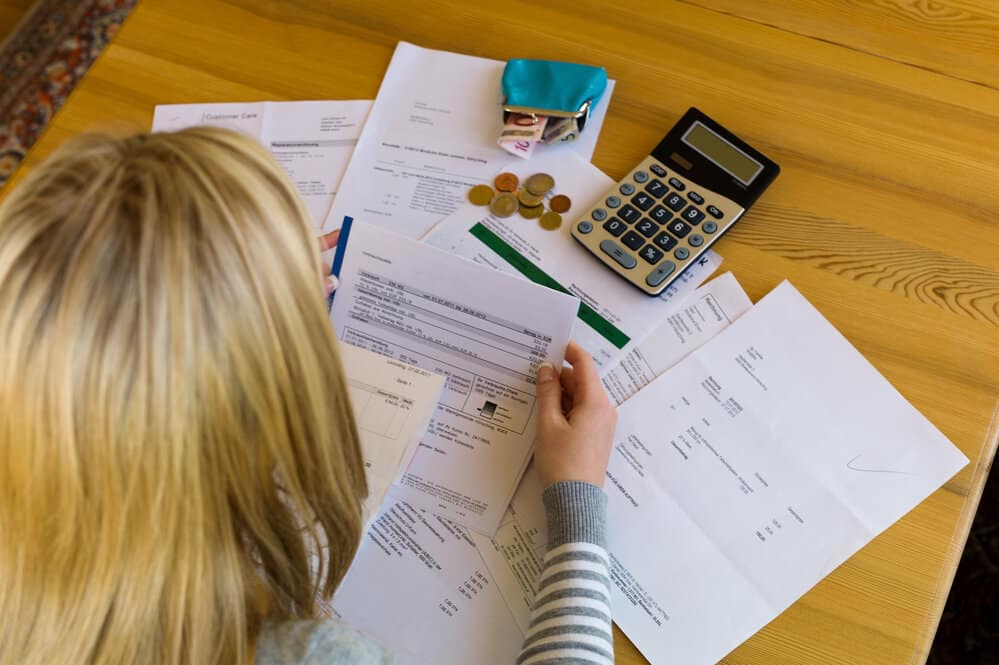Debt Relief: Achieve Financial Freedom
Have Credit Card Debt, Collection Accounts, Payday Loans, or Medical Bills? Get a personalized solution to manage your debt and achieve financial freedom.
Explore Your Debt Relief Options
Get your free, no-obligation consultation.
Here are Just a Few of the Major Credit Card Companies Money Fit Works With for Consolidating Debt:












The Money Fit debt management program isn’t a new loan substituting your existing debts. We’re your ally, actively negotiating with your credit card companies to alleviate your financial burden.
Debt Relief Made Simple: Your Path to Financial Freedom
Overwhelmed by debt? Millions face the same challenge—high-interest credit cards and mounting bills can erode financial stability. Debt relief provides a structured solution, and as a nonprofit credit counseling organization, Money Fit offers a trusted way forward. This content explains debt relief, details how it functions, and highlights the convenience of an online application process. Designed for those needing immediate assistance, it’s your entry point to reducing debt and restoring control.
- Lower your payments by up to 50% or more
- Stop harassing collection calls
- Reduce your interest rates
- Eliminate late and over-limit fees
With Money Fit, you could be debt-free in five years or less. Our mission is to help you get out of debt and stay out for good. We’ve already helped thousands of people pay off almost $2 billion in debt – let us help you too!
What Does Debt Relief Really Mean?
Debt relief refers to strategies that reduce or manage outstanding balances, customized to individual circumstances. It’s a proactive approach to alleviate financial pressure, particularly from unsecured debts such as credit cards, medical bills, or personal loans. At Money Fit, debt relief centers on debt management plans (DMPs), a nonprofit service that consolidates debts into one affordable payment without requiring additional borrowing.
Through a DMP, certified counselors negotiate with creditors to secure lower interest rates—often reducing them from 20% to 8%—and sometimes eliminate late fees. This results in a single monthly payment, simplifying finances and cutting costs. Unlike for-profit alternatives, which may prioritize fees or push debt settlement with potential drawbacks, Money Fit’s nonprofit mission ensures the focus remains on client success. For those seeking prompt relief, this method delivers measurable progress toward debt reduction.

What's Your Debt Free Date?
Jeanine’s on track to be free of credit card debt by September 19th, 2024. With the right plan, debt doesn’t have to be overwhelming. Debt relief combines strategies like negotiating with creditors, lowering interest rates, and consolidating payments – just like Jeanine’s plan with Money Fit. We’ll create a personalized strategy to help you reach your own debt-free date.
Contact Money Fit today for your free consultation. We’ll help you create your own debt-free journey!
How Debt Relief Works with Money Fit
Understanding the process is key to making an informed decision. Here’s how Money Fit delivers debt relief, step by step, with clarity and precision.
Step 1: Free Assessment
The journey begins with a confidential review. Share your income, expenses, and debt details with a certified counselor during a 15-20 minute consultation. This establishes a foundation for a personalized plan.
Step 2: Negotiation
Money Fit’s counselors then engage with your creditors—credit card issuers, loan providers, or other unsecured debt holders. They secure reduced interest rates and improved terms, a process that can lower your overall repayment burden significantly over time.
Step 3: One Payment
Upon plan approval, you make a single monthly payment to Money Fit. The organization distributes these funds to your creditors, eliminating the complexity of managing multiple accounts and deadlines.
Step 4: Payoff
With consistent payments, debt is typically eliminated within 3-5 years, depending on the total amount owed. Smaller balances may clear sooner, while larger ones—such as $20,000—might take the full term. Progress is steady and predictable.
How Money Fit Can Help You Achieve Debt Relief
We’ve helped thousands overcome debt and build lasting financial health. Our experienced counselors create personalized debt management plans designed to reduce interest rates, lower monthly payments, and put an end to harassing collection calls.
Our mission is your financial freedom. We have strong relationships with creditors and provide ongoing support and educational resources. These tools will help you achieve immediate relief and build long-term financial resilience.

Applying for Debt Relief Online
For those needing swift action, applying online offers a convenient starting point—secure, efficient, and available around the clock.
The process is straightforward. Call us at 1(800) 432-0310 or complete the brief form at the beginning of this page with your name, and contact information, which takes approximately 2 minutes. A certified counselor will reach out, typically via phone or email, to discuss your financial situation in detail. Following this, you may be presented with a customized DMP proposal. If it meets your needs, enrollment is completed and you be provided access to a secure online portal, granting 24/7 access to monitor your plan’s progress.
To expedite the process, have your debt statements available—accurate balances and interest rates assist our counselors in crafting an effective plan quickly.
Why Nonprofit Debt Relief Beats the Alternatives
Debt relief options vary widely, but nonprofit services stand apart for their client-focused approach. For-profit alternatives, such as debt settlement or commercial loans, often come with trade-offs that nonprofit DMPs avoid.
Debt settlement may reduce balances but frequently involves substantial fees, potential tax liabilities, and credit score impacts. Commercial loans can consolidate debt, yet they often require strong credit for favorable rates—elusive for those already burdened. Money Fit’s DMPs offer a different path: reduced interest rates, a single payment, and ongoing support from certified counselors. One client, for instance, eliminated $15,000 in credit card debt over 4 years with Money Fit, saving thousands in interest compared to managing payments independently.
Nonprofit status ensures accountability—look for affiliations like the National Foundation for Credit Counseling (NFCC) or the Financial Counseling Association of America (FCAA) as a mark of credibility. Be cautious of online offers promising instant solutions for large fees; effective debt relief requires a structured, transparent approach, which Money Fit delivers consistently.
Your Next Move
Debt relief transforms financial strain into opportunity—consolidating payments, lowering interest, and paving the way to stability. Money Fit’s nonprofit DMPs and online application process make it actionable and approachable, especially for those needing relief now. You’ve seen how it works, what it targets, and why nonprofit outperforms other options.
Relief is within your grasp—there’s no need to navigate debt alone. Take the first step toward freedom by submitting your online debt relief application with Money Fit. Nonprofit expertise, offered at no initial cost, is ready to support you. Act today and start rebuilding your financial future.
Frequently Asked Questions About Debt Relief
What debts qualify for debt relief?
Money Fit’s DMPs address unsecured debts, including credit cards, medical bills, and personal loans. Secured debts, such as mortgages or auto loans, are not eligible, making high-interest accounts the primary focus.
How does an online debt relief application begin?
Submit a brief form with your debt details, and a counselor will contact you within 1-2 business days. A tailored plan follows, with secure online enrollment available.
Does debt relief impact my credit?
A DMP may cause a temporary credit dip due to account closures, but regular payments enhance your score over time. Settlement, by contrast, often has a more severe, prolonged effect.
Money Fit Insights
Get expert advice, practical tips, and in-depth analysis to achieve your financial goals.











